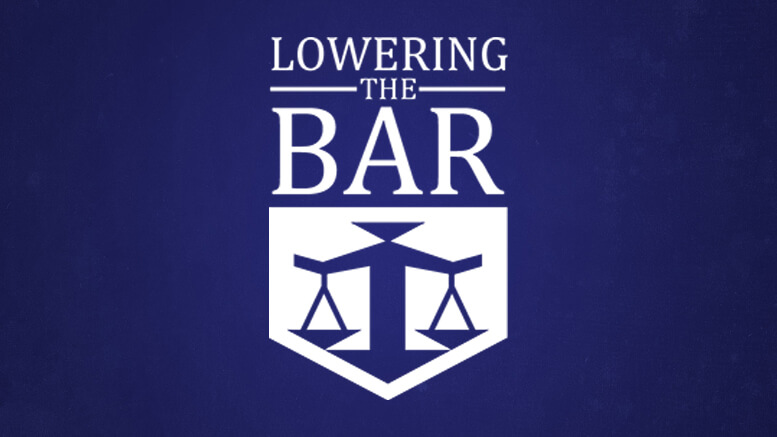The tale of the woman who sued the manufacturer of “Cap’n Crunch with Crunch Berries” for allegedly misleading her about the “berries,” has turned out to be extremely popular, bringing literally tens of thousands of people to this site over the past few days.
Unfortunately, one of them was her lawyer.
He thought I had been unfair to his client and asked me to clarify that she had not alleged that she personally believed “crunchberries” to be an actual kind of fruit. This was a little puzzling to me, especially since the judge who dismissed her case seemed to have interpreted her claims the way I had (and I had quoted his opinion at length in my post). The lawyer ultimately seemed to accept that this was understandable, but asked me to look at the pleadings and the motion for reconsideration they have filed (that’s the “update” – they are asking the judge to reconsider), in order to get a better sense of what the plaintiff was really arguing. So I did that.
If you read her complaint(s) very closely, the plaintiff may not have clearly said that she thought crunchberries were an actual fruit that exist in nature. But she did claim (and still does) that she was misled by the Crunchberries packaging, specifically (1) the word “berry” in the name of the product, (2) the picture of “pieces of cereal in bright fruit colors, shaped to resemble berries,” and (3) “the product’s namesake, ‘Cap’n Crunch,’ thrusting a spoonful of ‘Crunchberries’ at the prospective buyer.” See Motion for Reconsideration at p. 2. In the motion, she then says this: “There can be no other reason for the emphasis on berries than to lead consumers to believe the Product is made with real fruit content.” Id.
So if I understand correctly, she wasn’t saying she thought the cereal was actually made with a fruit called “crunchberries,” but rather that the word “berries” and the colorful berry-like objects on the box led her to believe that the “crunchberries” being thrust at her by the Cap’n contained some kind of real berries or real berry parts, when in fact they did not. (Actually, they did —at least “a touch of strawberry fruit concentrate”—though not very much. But let’s set that aside for now.)
There is a distinction there, but I’m not sure it’s one that makes much of a difference. Here’s where I think the problem is: how can a reasonable consumer claim to be misled by the word “berries” immediately following the word “crunch,” if that person does in fact know whether or not “crunchberries” really exist? Shouldn’t the use of a term that the person supposedly knows is not real be considered a reasonable signal that what’s inside the box might not be real, either?
I mean, if you read “The Hobbit,” I’m not sure you can complain later that you thought it was going to be a true story.
What is really through the looking glass here is that the woman’s lawyer does have a point. The allegations in this case were not too different from those in some other cases that have survived a motion to dismiss under California consumer protection laws. But it is fair to say that this may be because those laws encourage weak lawsuits, not because this plaintiff had a compelling case. I understand that she probably didn’t like the implication that she isn’t bright enough to know there are no “crunchberries.” But the risk of that implication is probably inherent in putting your name on this kind of a complaint.
Remember, though, that a low-IQ plaintiff is not necessarily the inference that should be drawn. Another possibility is that she is an entirely normal person who knew perfectly well that there are no “crunchberries,” and probably knew that “Cap’n Crunch” is not a fruit-laden cereal. Certainly, based on the Internet reaction, it does seem like most conscious human beings know both these things. But if there is a law out there like California’s UCL, which is so broad that it has permitted lawsuits to go forward on even dumber facts than these (and trust me, it has), then it might be a rational and intelligent decision to try to get some money out of it. But obviously, the more rational and intelligent a plaintiff is portrayed to be, the less plausible it is that he or she was really deceived by, let’s say, an aggressive spoon-wielding cartoon sailor. So there is an inherent tension here, of which UCL plaintiffs in borderline cases should be aware.
As for the motion for reconsideration, the argument there is basically that a judge should never, or almost never, grant a motion to dismiss by just looking at the case and deciding that no reasonable consumer would bring it. Plaintiff argues that whether a practice is “deceptive” is “largely a question of fact that should be determined only after the parties have had the opportunity to complete discovery and present evidence.” Id. at p. 8. But the reality is that most cases settle if they get that far, because discovery and presentation of evidence are expensive. If a judge can’t toss a weak case early on, then plaintiffs in some really lame cases will get paid, and more lame cases will be filed.
That’s okay with me, because it gives me (and others) plenty to write about. But it does have costs. Anyway, I hope I’ve now clarified matters in the Crunchberry case, and also provided fair warning that those who file lawsuits with comedy potential should not be surprised if they end up on the Internet.
Here’s the motion for reconsideration so the Internet can evaluate the arguments for Itself.
